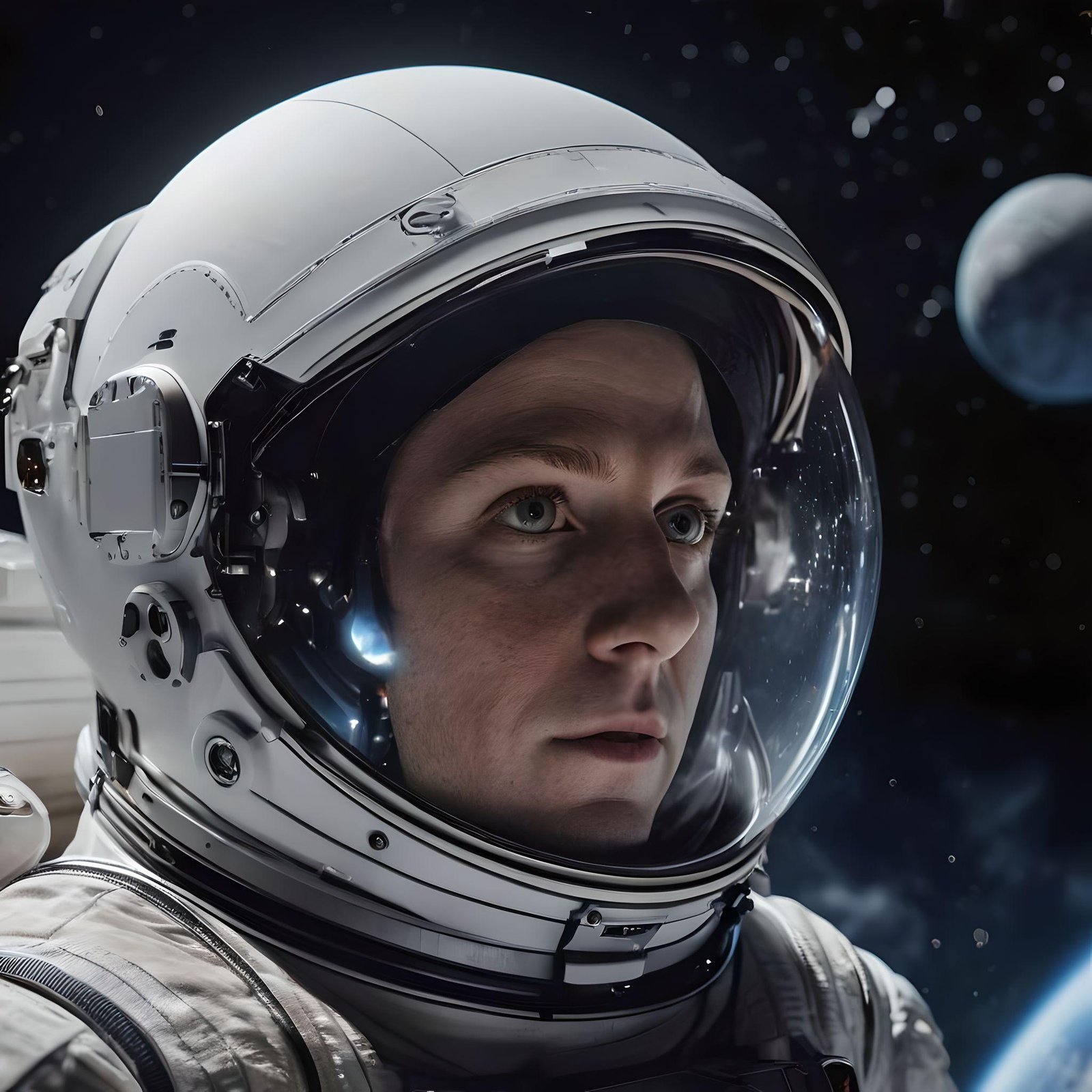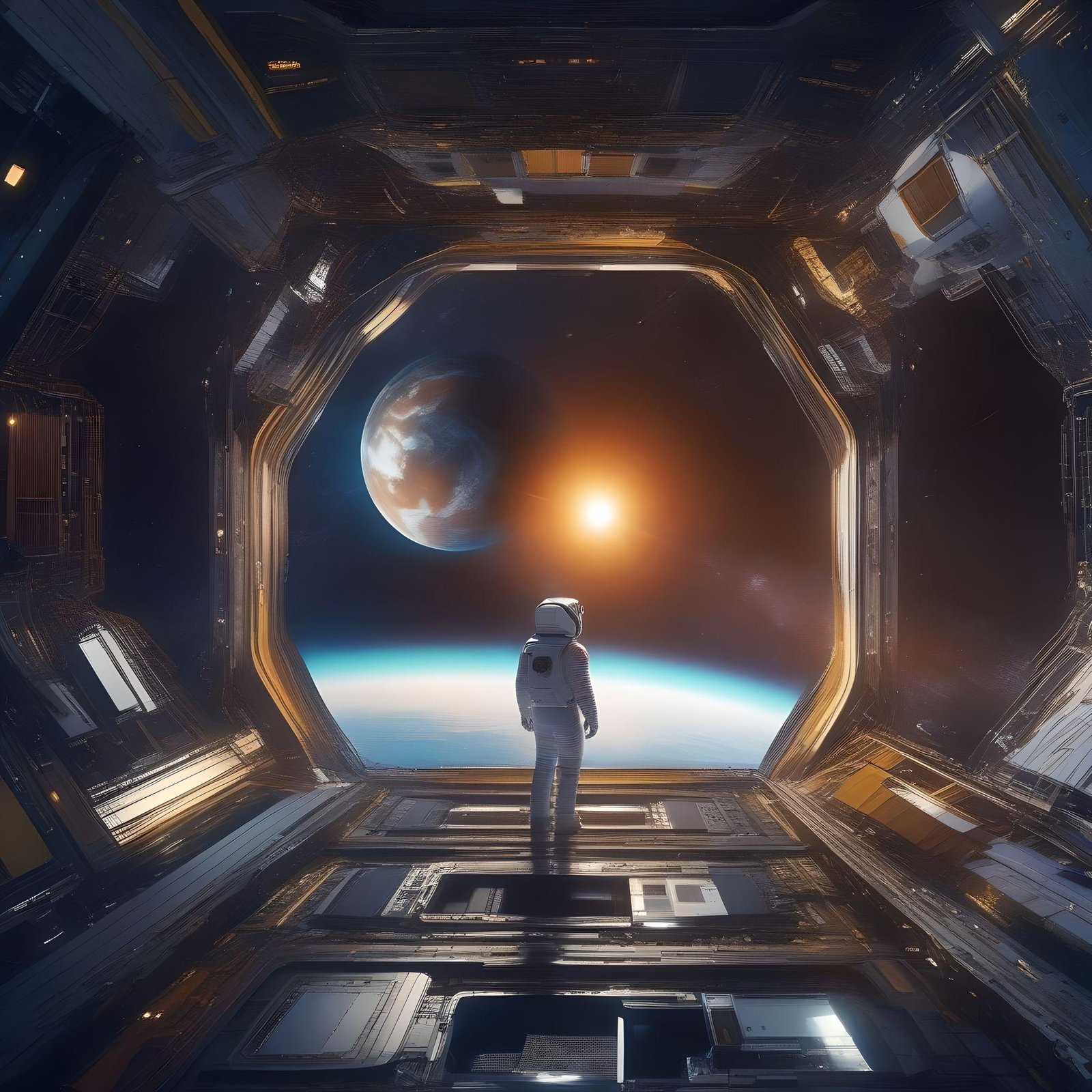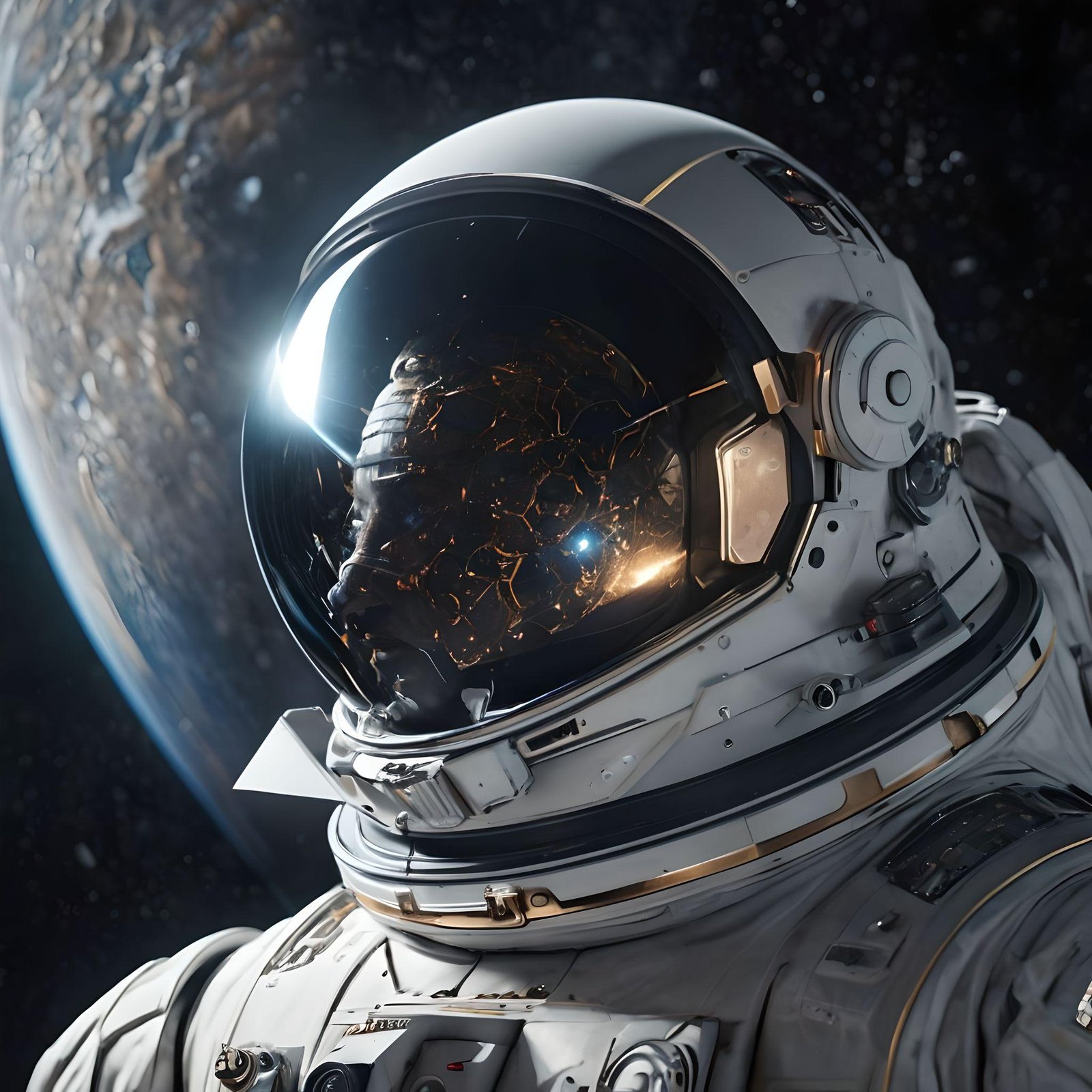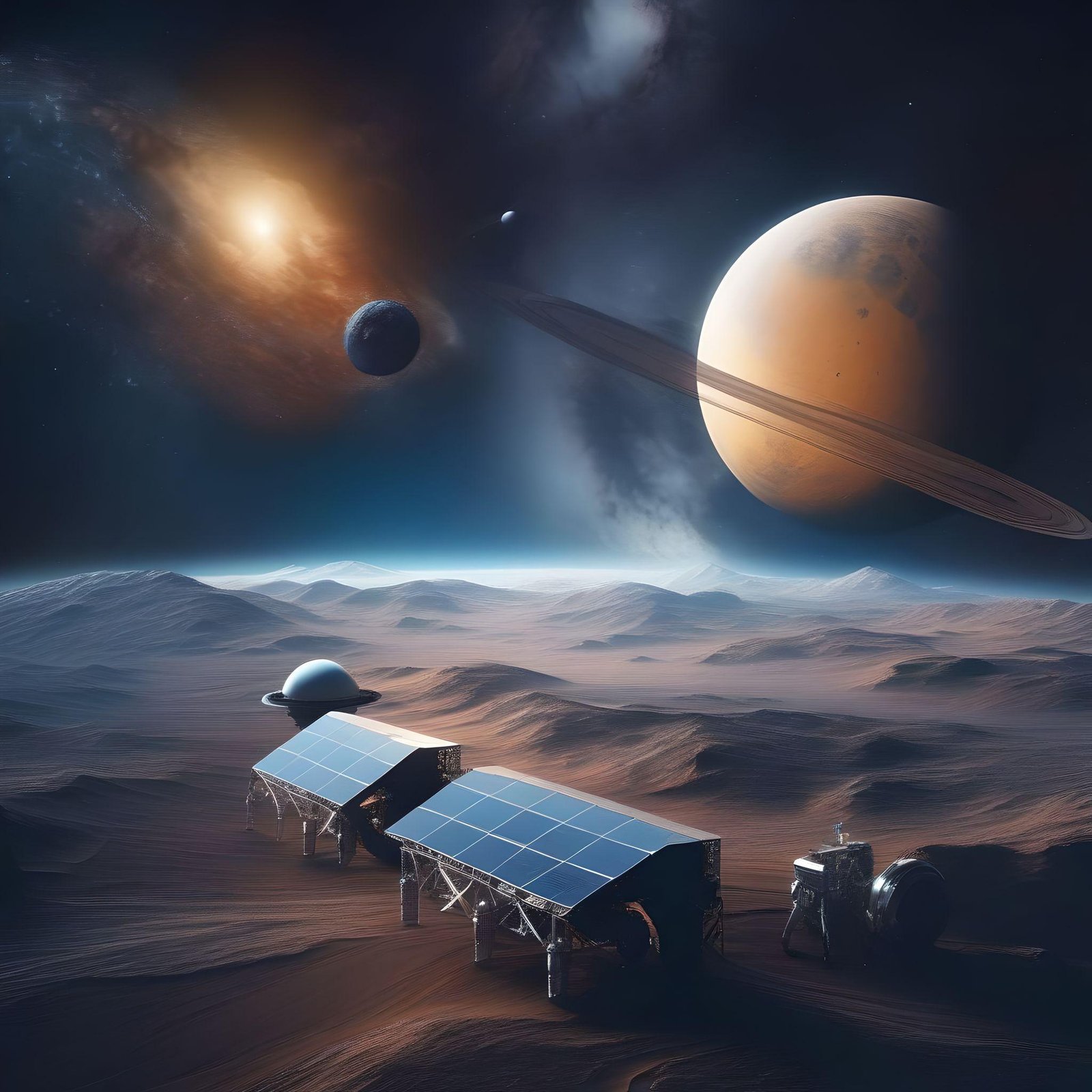AI and the Exploration of Space
The application of artificial intelligence (AI) in Exploration of Space has opened new vistas in our quest to understand the universe. AI has emerged as a transformational force in several fields. Artificial Intelligence is transforming space exploration from satellite technology to spacecraft operations and mission planning.
Introduction to AI in Exploration of Space
AI and space exploration together have a lot of potential. Given the size of space and the difficulties associated with exploring it, artificial intelligence (AI) provides ways to improve the effectiveness, dependability, and safety of space missions. Artificial Intelligence is a crucial instrument for space agencies and researchers because to its capacity to evaluate large volumes of data and make judgements on its own in real time.

AI in Satellite Technology
AI for Satellite Communication
Since they make communication, navigation, and Earth observation easier, satellites are essential to contemporary exploration of space. By lowering interference, increasing data transmission rates, and dynamically modifying signal frequencies, AI algorithms are improving satellite communication systems. This boosts communication network efficiency and guarantees continuous connectivity for space missions.
1. Dynamic Spectrum Management:
Imagine a crowded highway. Traditionally, satellites were assigned fixed frequencies like lanes on a road. AI steps in like a smart traffic controller. It analyzes real-time data on:
- Spectrum usage: AI monitors how other satellites and terrestrial systems are using the frequency bands.
- Atmospheric conditions: Weather can affect signal strength. AI considers factors like rain or solar flares
- Traffic patterns: AI predicts future communication needs based on user data and historical trends.
Using this data, AI algorithms can:
- Identify underutilized frequencies: Just like finding an empty lane on the highway, AI can find less congested frequencies for optimal signal transmission.
- Predict and avoid interference: AI can anticipate when another satellite might need a specific frequency and switch channels proactively, preventing signal jamming.
2. Adaptive Beamforming:
Traditionally, satellite signals were broadcast in a wide beam, like shining a flashlight in all directions. AI enables smarter “flashlight control.”
- AI analyzes user location and data needs: It understands where signals need to be strongest and tailors the beam accordingly.
- Dynamic beam adjustment: AI can adjust the beam shape and direction in real-time to follow a moving user or focus on areas with high traffic.
This ensures:
- Stronger and more targeted signals: Less wasted energy and a better user experience.
- Increased capacity: By focusing beams, AI allows more users to share the same frequency without interference.
3. AI-powered Error Correction and Data Compression:
- AI can predict and correct errors that may occur during transmission due to factors like atmospheric noise.
- AI can optimize data compression techniques based on the type of data being transmitted. This reduces the amount of data sent without compromising quality, allowing for faster transmission speeds.
Benefits:
- Uninterrupted communication for space missions: Critical data from rovers, probes, and astronauts flows smoothly.
- Improved efficiency of communication networks: More users can be served with better quality connections, even in remote areas.
- Reduced operational costs: AI helps optimize resource allocation and minimize wasted bandwidth.

AI for Satellite Imaging
Monitoring the surface of the Earth, weather trends, and environmental changes all depend on satellite imaging. High-resolution photos may be taken by satellites with more accuracy and detail thanks to AI-powered image processing technologies. These photos are analysed by machine learning algorithms, which help with resource allocation and crisis management by spotting abnormalities, monitoring environmental changes, and forecasting natural disasters.
AI in Spacecraft Design and Operations
Autonomous Navigation Systems
Spacecraft navigation relies heavily on AI, which makes autonomous manoeuvring and trajectory planning possible. In order to navigate through space debris, avoid collisions, and maximise fuel use, sophisticated AI systems interpret sensor data in real-time. The use of autonomous navigation systems improves space mission dependability and safety while lowering human intervention.
Onboard AI for Decision Making
Onboard artificial intelligence (AI) systems in spacecraft are able to make difficult judgements on their own. These artificial intelligence (AI) systems perform real-time remediation activities, forecast system breakdowns, and analyse environmental data. Onboard AI improves mission autonomy and resilience by lowering reliance on ground control, allowing spacecraft to adjust to unforeseen events and accomplish mission objectives.

AI in Space Missions Planning
Mission Simulation and Optimization
Researchers may model and simulate complex space missions using AI-powered simulation tools, analysing various scenarios and optimising mission parameters. In order to help researchers detect potential dangers and develop mitigation techniques, machine learning algorithms analyse previous data and forecast mission results. The utilisation of resources is minimised and space mission efficiency and success rate are increased through simulation-based planning.
Risk Management with AI
Space exploration is by its very nature dangerous, with many unknowns and difficulties facing expeditions. By examining data from numerous sources, like as spacecraft telemetry, environmental sensors, and prediction models, AI systems evaluate the risks associated with a mission. Artificial Intelligence (AI) facilitates proactive risk management tactics by detecting potential risks and weaknesses, thereby guaranteeing space mission safety and success.

Challenges and Limitations
AI in space exploration has several limitations and obstacles, despite its potential. Thorough testing and validation are necessary to assure the durability of AI systems in space conditions, as reliability and safety issues have been raised. Space mission accountability and duty are called into question by ethical concerns concerning AI autonomy and decision-making.
Future Prospects and Innovations
Exciting prospects exist for AI in space exploration in the future. The creation of autonomous space probes and planetary rovers that can explore far-off worlds will be made possible by the integration of AI with robotics. Deep learning algorithm developments will transform data analysis and interpretation and provide fresh answers to the universe’s puzzles.
Conclusion
In summary, artificial intelligence (AI) is transforming space exploration by facilitating advances in satellite technology, spacecraft operations, and mission planning. We can overcome the difficulties of space travel and start audacious expeditions to explore the remote reaches of the universe by utilising AI.
FAQs (Frequently Asked Questions)
How does AI enhance satellite communication?
AI optimizes satellite communication systems by dynamically adjusting signal frequencies, reducing interference, and enhancing data transmission rates, ensuring uninterrupted connectivity for space missions.
What role does AI play in spacecraft navigation?
AI enables autonomous maneuvering and trajectory planning, processing sensor data in real-time to navigate through space debris, avoid collisions, and optimize fuel consumption, enhancing the reliability and safety of space missions.
How does AI contribute to space mission planning?
AI-powered simulation tools model and simulate complex space missions, optimizing mission parameters and identifying potential risks. AI algorithms analyze historical data to predict mission outcomes, improving mission efficiency and success rates.
What are the challenges of using AI in space exploration?
Reliability and safety concerns regarding AI systems require rigorous testing and validation to ensure their robustness in space environments. Ethical considerations surrounding AI decision-making raise questions about accountability and responsibility in space missions.
What are the future prospects of AI in space exploration?
Integration of AI with robotics will enable the development of autonomous space probes and planetary rovers. Advancements in deep learning algorithms will revolutionize data analysis, unlocking new insights into the mysteries of the universe.


1 thought on “AI and the Exploration of Space”